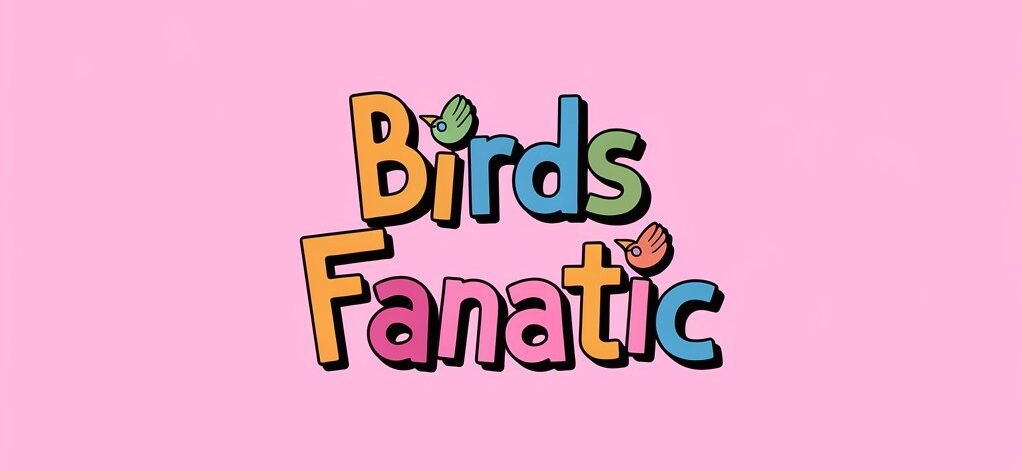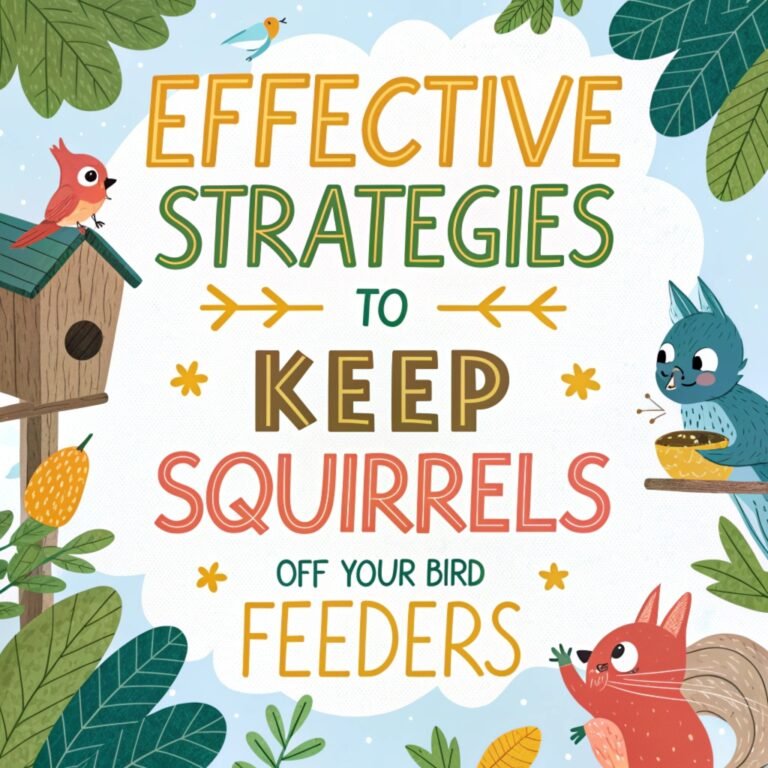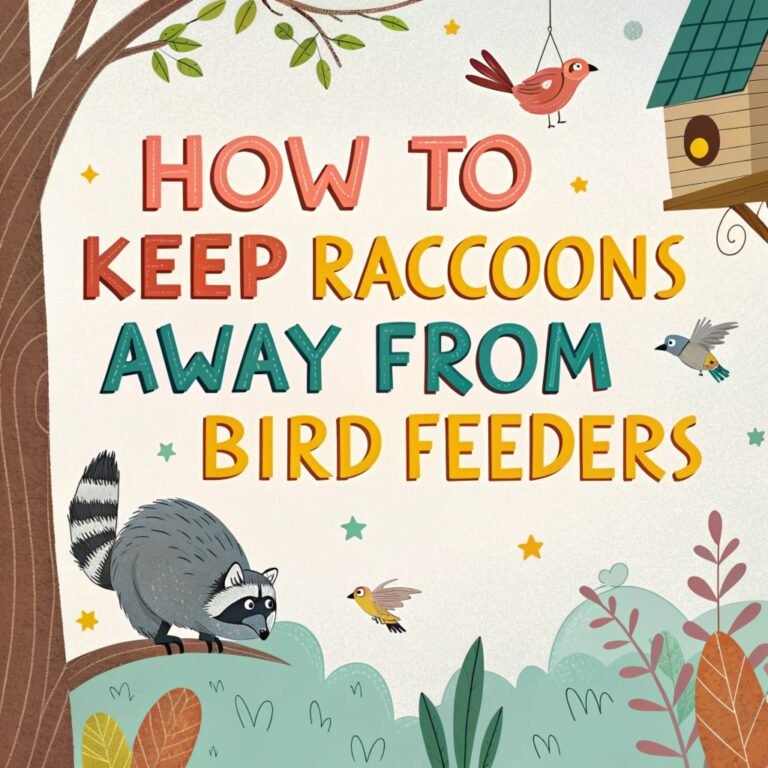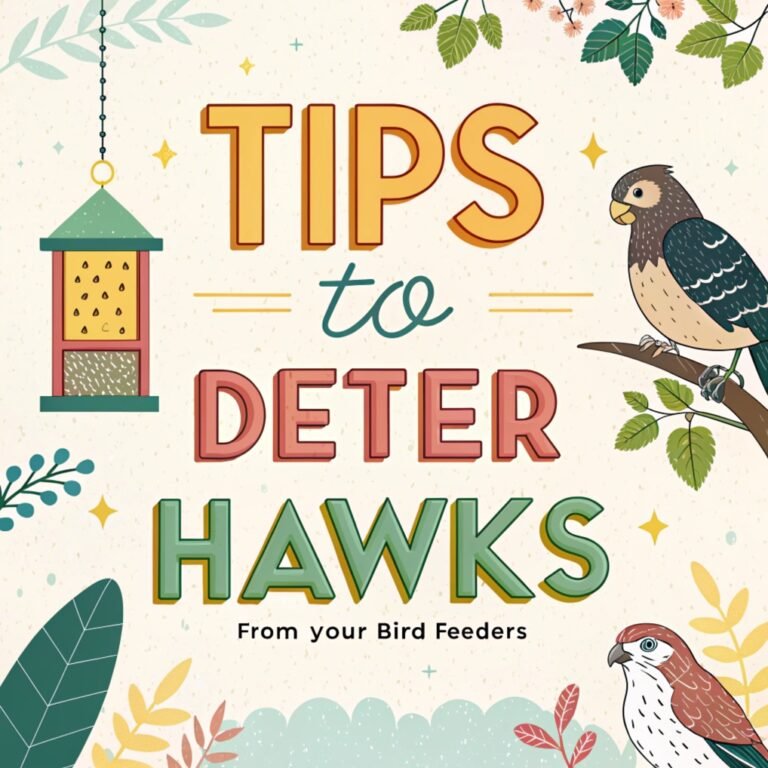Effective Strategies to Keep Squirrels Off Your Bird Feeder Pole: A Comprehensive Guide
Keeping squirrels away from bird feeders is a common challenge for bird enthusiasts. These clever and persistent creatures can quickly deplete your bird seed supply and discourage birds from visiting your feeders.
In this comprehensive guide, we’ll explore various effective methods to keep squirrels off your bird feeder pole, ensuring that your feathered friends can enjoy their meals undisturbed.

Key Takeaways:
- Use a squirrel baffle: Install a cone-shaped or cylindrical baffle on your feeder pole to prevent squirrels from climbing up.
- Position feeders strategically: Place feeders at least 10 feet away from jumping points like trees or fences.
- Choose the right seeds: Opt for safflower seeds or nyjer seeds, which squirrels find less appealing.
- Install a slinky: Attach a slinky to your feeder pole as an inexpensive and effective deterrent.
- Use squirrel-proof feeders: Invest in feeders designed to close when a squirrel’s weight is applied.
- Apply capsaicin or hot pepper: Sprinkle cayenne pepper on seeds or use a capsaicin-based spray to deter squirrels.
- Maintain cleanliness: Regularly clean up fallen seeds to reduce squirrel attraction.
- Provide alternative food sources: Set up a separate squirrel feeder to divert their attention.
- Use smooth, metal poles: Choose poles that are difficult for squirrels to grip and climb.
- Implement the 5-7-9 rule: Ensure feeders are at least 5 feet high, 7 feet from jumping points, and 9 feet below overhanging branches.
Understanding Squirrel Behavior: Key to Effective Prevention
To effectively keep squirrels off your bird feeder pole, it’s crucial to understand their behavior. Squirrels are agile climbers with the ability to jump up to 5 feet vertically and 7 feet horizontally.
They’re also intelligent problem-solvers, often figuring out ways around obstacles. Squirrels are attracted to bird feeders due to the easy access to food, especially seeds high in fat and protein.
Their persistent nature means they’ll keep trying to reach the feeder, even if initially deterred. Understanding these traits helps in implementing effective prevention strategies.
By recognizing their climbing and jumping abilities, you can position your feeders appropriately.
Knowing their food preferences allows you to choose less attractive seeds for your bird feeders. This knowledge forms the foundation for creating a squirrel-proof feeding station for your feathered friends.
The Baffle Method: A Proven Squirrel Deterrent

One of the most effective ways to keep squirrels off your bird feeder pole is by using a baffle. A baffle is a physical barrier that prevents squirrels from climbing up the pole to reach the feeder.
There are two main types of baffles: wrap-around and torpedo. Wrap-around baffles create a conical, unstable separation between the pole and the feeder, while torpedo baffles turn the pole into a dead-end for climbing squirrels.
To install a baffle effectively, place it at least 4-5 feet above the ground. This height prevents squirrels from jumping over it.
Ensure the baffle is made of durable material like metal or hard plastic that squirrels can’t chew through. Proper placement is crucial for the baffle’s effectiveness.
Remember, squirrels can jump up to 5 feet vertically, so position the baffle high enough to prevent them from leaping over it.
Strategic Feeder Placement: Outsmarting Squirrel Acrobatics
Strategic placement of your bird feeders is crucial in keeping squirrels at bay. The key is to position your feeders in a way that makes it difficult for squirrels to reach them.
Implement the 5-7-9 rule: place feeders at least 5 feet high, 7 feet away from any jumping-off point, and 9 feet below any overhanging branches. This positioning takes advantage of the limitations in squirrels’ jumping abilities.
Consider using a pole system for your feeders instead of hanging them from trees. Place the pole in an open area, away from structures or trees that squirrels could use as launching pads.
If you must use trees, choose ones with smooth bark that are harder for squirrels to climb. Remember, the farther your feeder is from squirrel-friendly structures, the less likely they are to reach it.
Squirrel-Proof Feeders: Investing in Smart Solutions

Investing in squirrel-proof feeders can be an effective long-term solution. These feeders are designed with mechanisms that close access to the seed when a squirrel’s weight is applied.
One popular option is the Wild Birds Unlimited Eliminator, which has weight-sensitive perches that close the feeding ports when a squirrel tries to access them. These feeders allow birds to feed comfortably while keeping squirrels out.
Another type of squirrel-proof feeder uses a cage-like structure around the seed container. The openings in the cage are large enough for small birds to enter but too small for squirrels.
While these feeders may limit access for larger birds, they effectively keep squirrels away from the seed. When choosing a squirrel-proof feeder, consider factors like durability, ease of cleaning, and the types of birds you want to attract.
The Slinky Trick: An Inexpensive DIY Solution
A surprisingly effective and inexpensive method to keep squirrels off your bird feeder pole is the slinky trick. This method involves attaching a metal slinky to your feeder pole.
When a squirrel attempts to climb the pole, the slinky stretches and drops the squirrel back to the ground. To implement this trick, simply thread your pole through the center of the slinky and secure the top with duct tape.
The slinky method works well because it creates an unstable surface that squirrels can’t grip. As they try to climb, the slinky moves and stretches, making it impossible for them to maintain their hold.
This method is particularly effective on smooth poles. While it may look unconventional, many bird enthusiasts swear by its effectiveness. Plus, at a cost of just a few dollars for a slinky, it’s a budget-friendly option worth trying.
Spicy Deterrents: Using Cayenne Pepper and Capsaicin
Spicy deterrents can be an effective way to keep squirrels away from your bird feeders. Cayenne pepper and other capsaicin-based products are unpleasant for squirrels but don’t bother birds.
You can sprinkle cayenne pepper directly on the seeds in your feeder or mix it with the seed before filling the feeder. Alternatively, you can use a liquid capsaicin spray on and around your feeder pole.
When using spicy deterrents, it’s important to reapply regularly, especially after rain. While effective, this method requires consistent maintenance.
It’s also worth noting that while birds aren’t affected by the spice, it can irritate their eyes if they rub them after contact. To minimize this risk, consider using a capsaicin-infused suet or seed blend specifically designed for bird feeders.
Always handle these spicy substances with care to avoid irritation to your own skin and eyes.
Choosing the Right Seeds: Outsmarting Squirrel Preferences
Selecting the right type of bird seed can play a significant role in deterring squirrels. While squirrels are opportunistic eaters, they do have preferences.
Safflower seeds are a great option as many birds enjoy them, but squirrels typically don’t. Similarly, nyjer seeds, favored by finches, are usually ignored by squirrels. By filling your feeders with these seeds, you can attract birds while discouraging squirrels.
Another strategy is to use seed blends that contain a high percentage of millet. Most squirrels don’t find millet particularly appealing, but many birds do.
You can also try using suet cakes instead of loose seed. While some squirrels may still be attracted to suet, it’s generally less appealing to them than seeds.
By strategically choosing your bird food, you can make your feeders less attractive to squirrels while still providing nutritious options for your feathered visitors.
Creating Physical Barriers: Innovative Obstacle Courses
Creating physical barriers or obstacle courses can be an effective and entertaining way to keep squirrels away from your bird feeders. One innovative method involves setting up two poles about seven feet apart and stringing a wire between them.
Hang your bird feeder from the center of this wire, and then string empty soda bottles along the wire on either side of the feeder.
When squirrels attempt to tightrope walk to the feeder, they’ll find it impossible to balance on the smooth, rotating bottles.
Another creative barrier involves using old CDs or DVDs. String these shiny discs along the wire leading to your feeder. The reflective surfaces and unpredictable movement of the discs as they spin in the wind can deter squirrels.
You can also create a barrier using a large, inverted plastic bowl or a specially designed squirrel baffle above hanging feeders. These obstacles prevent squirrels from accessing the feeder from above.
Maintaining Cleanliness: Reducing Squirrel Attraction
Keeping your feeding area clean is an often overlooked but crucial aspect of squirrel deterrence. Squirrels are attracted to fallen seeds and debris under feeders.
Regularly cleaning up spilled seed and hulls not only reduces this attraction but also helps prevent the spread of diseases among birds. Consider placing a tray or platform under your feeders to catch fallen seeds, making cleanup easier.
In addition to ground cleanup, regularly clean your feeders. Wash them with a mild soap solution and rinse thoroughly every few weeks.
This practice not only helps maintain hygiene for the birds but also removes any scent trails that might attract squirrels.
By maintaining a clean feeding area, you reduce the overall attractiveness of your yard to squirrels, making it less likely for them to persist in their attempts to reach your feeders.
Alternative Feeding Stations: Distracting Squirrels
While it may seem counterintuitive, providing an alternative feeding station for squirrels can be an effective way to keep them away from your bird feeders.
Set up a separate squirrel feeder in a different part of your yard, preferably far from your bird feeding area.
Stock this feeder with foods that squirrels love, such as corn cobs, peanuts in the shell, or specially formulated squirrel food.
The idea behind this strategy is to give squirrels an easier food source, reducing their motivation to raid your bird feeders. Place the squirrel feeder near natural squirrel habitats like trees or shrubs.
You can even make it more appealing by creating a squirrel-friendly obstacle course leading to their feeder. This not only keeps squirrels entertained but also provides them with mental and physical stimulation.
By satisfying the squirrels’ needs elsewhere, you can significantly reduce their interest in your bird feeders.
Using Scent Deterrents: Natural Repellents for Squirrels
Certain scents can be effective in deterring squirrels from your bird feeding area. Peppermint oil is a popular choice, as squirrels dislike its strong aroma.
You can soak cotton balls in peppermint oil and place them around your feeder poles or mix a few drops with water in a spray bottle and apply it to the area around your feeders. Other scents that squirrels tend to avoid include citrus, vinegar, and coffee grounds.
Another natural deterrent is predator urine, such as that of foxes or coyotes. While this might sound extreme, commercial products containing these scents are available and can be very effective.
Sprinkle these around the base of your feeder poles or in areas where squirrels frequent. Remember to reapply these scent deterrents regularly, especially after rain, to maintain their effectiveness.
While using scents, ensure they don’t negatively impact the birds you’re trying to attract.
Implementing Motion-Activated Devices: Startling Squirrels Away
Motion-activated devices can be an effective and humane way to deter squirrels from your bird feeders. These devices use sensors to detect movement and then activate a deterrent when a squirrel approaches.
Sprinkler systems that suddenly spray water when triggered by motion can startle squirrels and discourage them from returning.
Similarly, there are devices that emit a sudden burst of air or a high-frequency sound that’s unpleasant to squirrels but inaudible to humans and most birds.
Another option is motion-activated lights or reflective objects. While these may not be as effective during the day, they can help deter nocturnal squirrel activity.
When implementing these devices, position them strategically around your feeding area for maximum coverage. It’s important to occasionally change the location or type of deterrent to prevent squirrels from becoming accustomed to them.
Remember, the goal is to create an environment that squirrels find unpredictable and uncomfortable, encouraging them to seek food elsewhere.
FAQs
How high should I hang my bird feeder to prevent squirrels from reaching it?
Ideally, hang your bird feeder at least 5 feet off the ground and 7-8 feet away from any launching points like trees or fences. Remember, squirrels can jump up to 5 feet vertically and 7 feet horizontally.
Are there any bird seeds that squirrels don’t like?
Yes, squirrels generally don’t prefer safflower seeds, nyjer seeds, and millet. These seeds are less attractive to squirrels but are enjoyed by many bird species.
Can I use grease or oil on my feeder pole to deter squirrels?
It’s not recommended to use grease or oil on feeder poles. While it may deter squirrels, it can be harmful to their fur and skin, especially in cold weather. Instead, use a baffle or a slinky for a more humane deterrent.
How often should I clean my bird feeders to discourage squirrels?
Clean your bird feeders every two weeks with a mild soap solution and rinse thoroughly. Regular cleaning not only maintains hygiene for birds but also removes scent trails that might attract squirrels.
Are squirrel-proof feeders worth the investment?
Yes, squirrel-proof feeders can be a worthwhile investment. While they may be more expensive initially, they can save money in the long run by reducing seed waste and preventing damage to feeders caused by squirrels.
Do ultrasonic repellents work against squirrels?
Ultrasonic repellents have mixed results. Some users report success, while others find them ineffective. Their effectiveness can vary depending on the specific product and the persistence of the squirrels in your area.
Is it harmful to birds if I use spicy additives in their food to deter squirrels?
Generally, birds are not affected by capsaicin (the compound that makes peppers spicy) in the same way mammals are. However, it’s best to use commercially prepared spicy bird seeds or suets to ensure safety and proper concentration.
How can I tell if the squirrels are actually eating the bird food or just playing around the feeder?
Look for signs like rapidly depleting seed levels, chew marks on feeders, or scattered seed hulls on the ground. You can also set up a wildlife camera to observe feeder activity when you’re not around.
Are there any plants I can grow near my bird feeders to deter squirrels?
Some plants that squirrels tend to avoid include daffodils, hyacinths, and alliums. However, plants alone are usually not enough to deter determined squirrels from a food source.
How do I prevent squirrels from chewing through my plastic bird feeders?
To prevent chewing, consider switching to metal feeders or those made with chew-resistant materials. You can also add metal sheeting or wire mesh around vulnerable parts of plastic feeders.

Hello, I’m Amelia White, the founder of birdsfanatic.com. As a lifelong bird enthusiast and spiritual seeker, I’ve always been fascinated by the mystical connections between birds and the human experience. On this site, I share my knowledge and insights into the symbolic meanings and spiritual significance of various bird species, exploring their roles in mythology, folklore, and cultural traditions. Join me on this journey into the world of birds, where we’ll discover the hidden wisdom and guidance that these magnificent creatures have to offer.







